
The Designtex studio in New York City photographed by Matias Alvial for PIN–UP
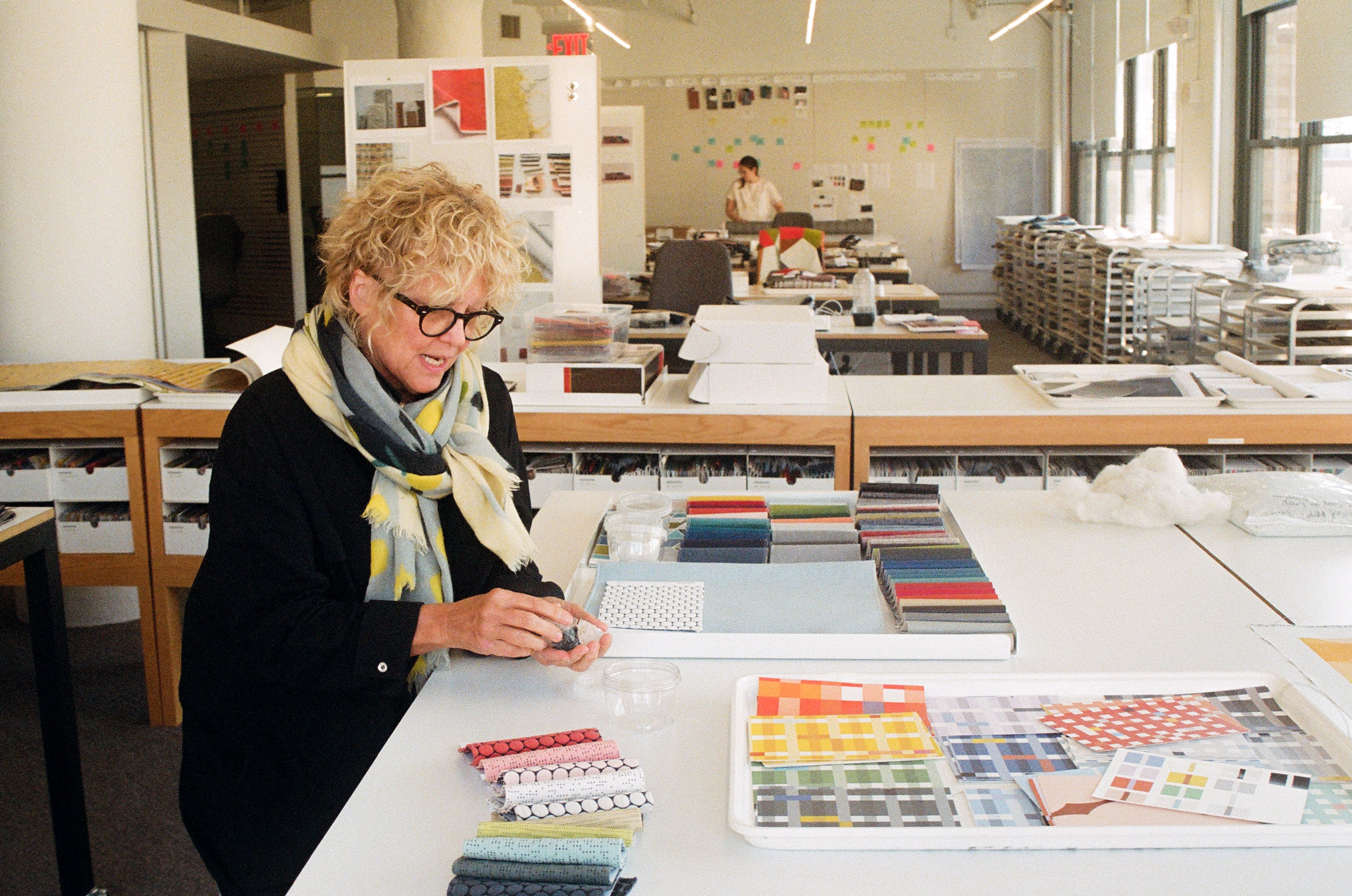
Susan Lyons photographed in the Designtex studio by Matias Alvial for PIN–UP
It’s impossible not to think of the idea of legacy when having a conversation Susan Lyons, the president of Designtex, a New York-based company for textile innovation. When we spoke — over Zoom, me in Vancouver and Susan from the new, Standard Issue-designed Designtex office in Tribeca — a study released by Greenpeace had just revealed that in 2021 only 5% of the plastic waste generated in the United States and disposed of into an ostensible recycling system was truly recycled. To Lyons, the news must have not come as a surprise. For all her optimism, Lyons is a pragmatist. Long before the term sustainability had entered the mainstream (and long before it started losing its meaning), Lyons’s work with textile design has consistently shaped the very processes that the larger textile industry looks to. Technically speaking she works in material and object design, but Lyons’s influence is on a larger scale, helping shift these processes in a direction that is better for the consumer and for the planet. Lyons was brought up in Illinois in the 1960s, where recycling, reusing, and composting was the norm. During a tenure in Ahmedabad, India, she learned directly from the local textile mills, designed for Boris Kroll Fabrics and then moved on to become Creative Director for Materials at Herman Miller, a position she held for seven years. She’s been the president at materials-giant Designtex since 2012, and she describes her work there as an ecosystem, designing like nature, and — despite her unending appetite for making — maintaining a commitment to making less.

The Designtex studio in New York City photographed by Matias Alvial for PIN–UP

Susan Lyons photographed by Matias Alvial for PIN–UP
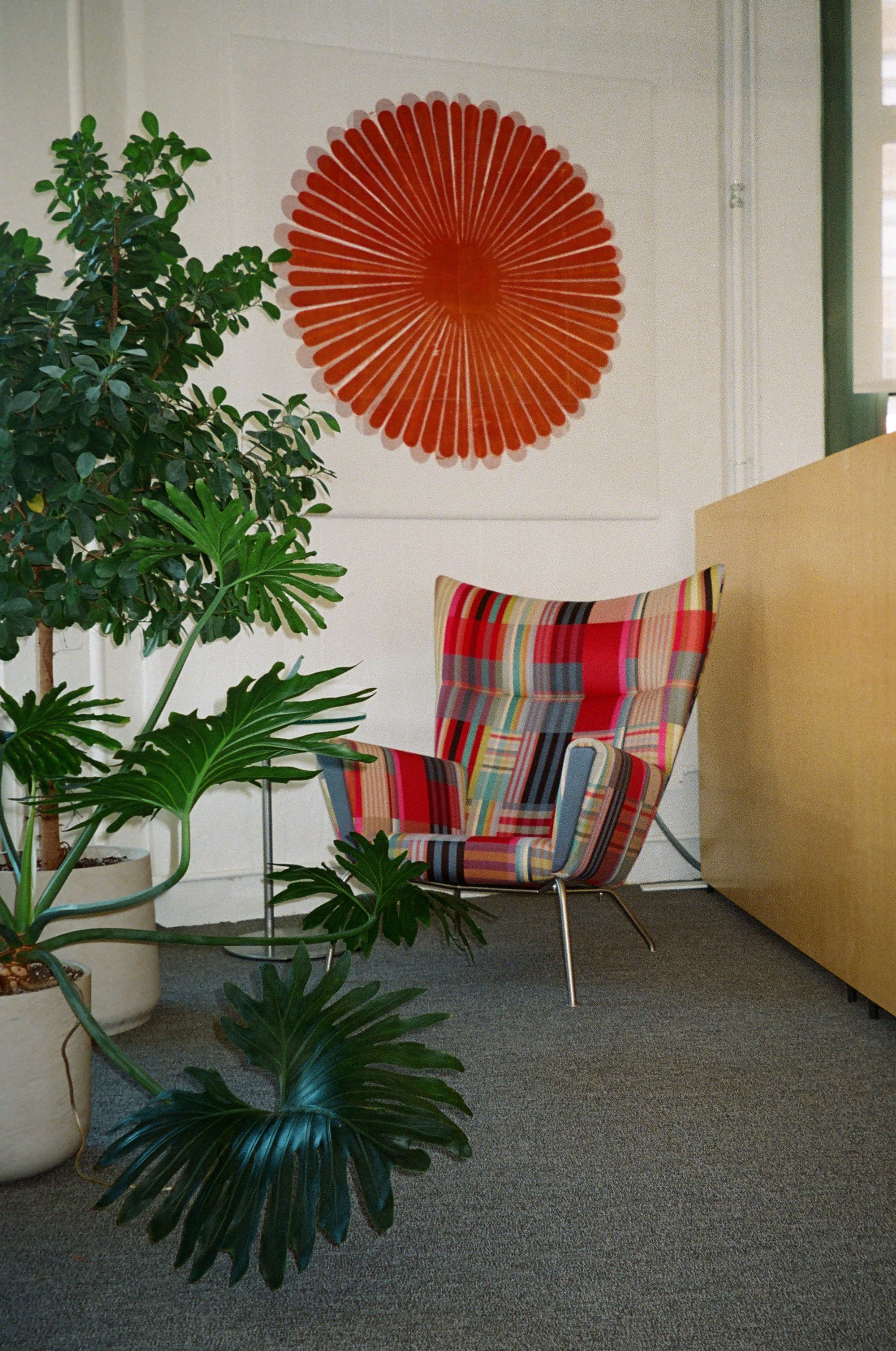
A Wallace & Sewell upholstered chair at the Designtex studio. Photographed by Matias Alvial for PIN–UP
Emma Leigh MacDonald: I’d like to begin with a reference to the 2002 book Cradle to Cradle: Remaking the Way We Make Things, the circular-economy manifesto by chemist Michael Braungart and architect William McDonough. McDonough wrote: “To eliminate the concept of waste means to design things-products, packaging, and systems from the very beginning on the understanding that waste does not exist.” You worked with them early in your career. Can you tell me about that collaboration?
Susan Lyons: Yes. I worked with Michael and Bill in the early 90s, long before their book was published, but they had already started working on it. At the time Carol Derby, who now runs the R&D team at Designtex, and I tried to figure out how to make greener textiles. We recognized that textiles have a large environmental footprint, and we wanted to see how we could build a better mousetrap, as they say. Sustainability wasn’t really a word we even used or knew then. It was also pre-Internet of course, so our research was a case of trying to gather as much information through publications and newspapers, etc. I had read an article in The Wall Street Journal about an American architect who had convinced a Polish developer to plant 10,000 acres of trees to offset the greenhouse gases that the building he designed was going to create. It was Bill McDonough. I thought that was an audacious thing to do. When I discovered that his architectural practice was in New York I called him up and asked if I could come talk to him, to which he said, “Come on over.” We met and I explained our research, which was the post-industrial recycled fiber that was available — and even then, not very available. He just listened, then at one point, he said, “Well, it’s pretty simple. You should just make textiles as nature does. You should follow the maxim that waste equals food.” I remember thinking at the time, like, “Okay, but what does that mean?” [Laughs].
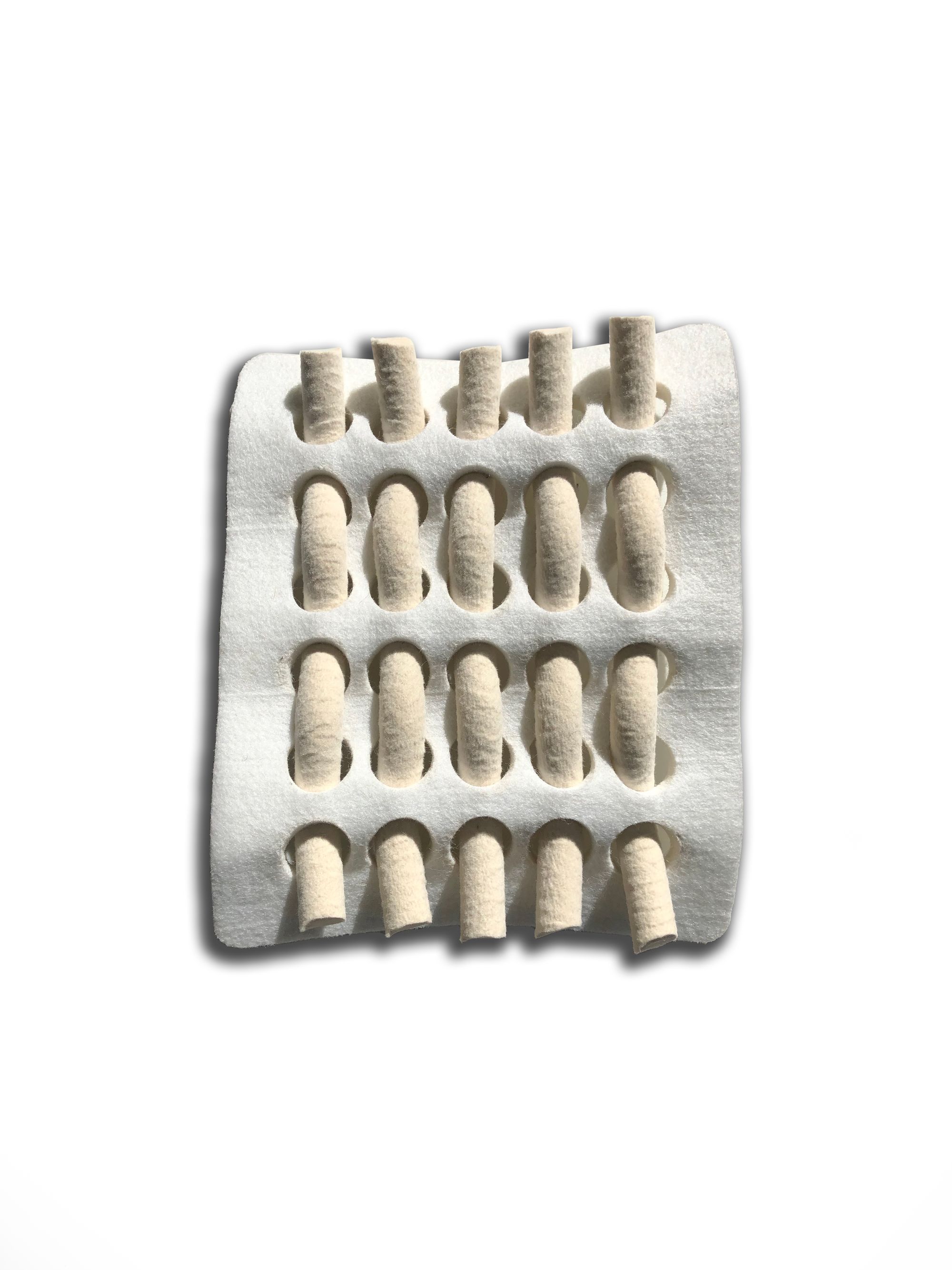
Material inspiration. Photographed by Matías Alvial for PIN–UP
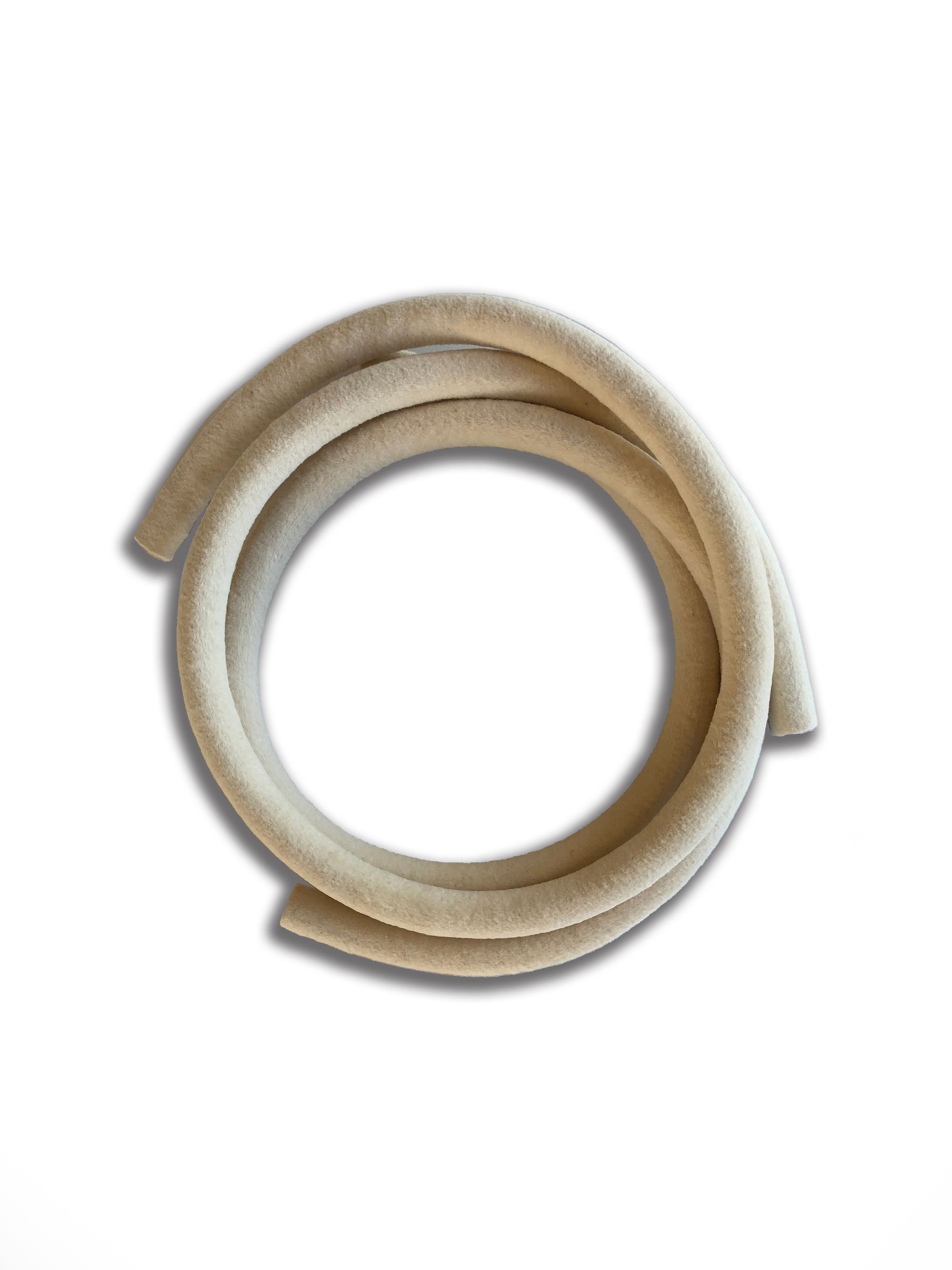
Material inspiration. Photographed by Matías Alvial for PIN–UP
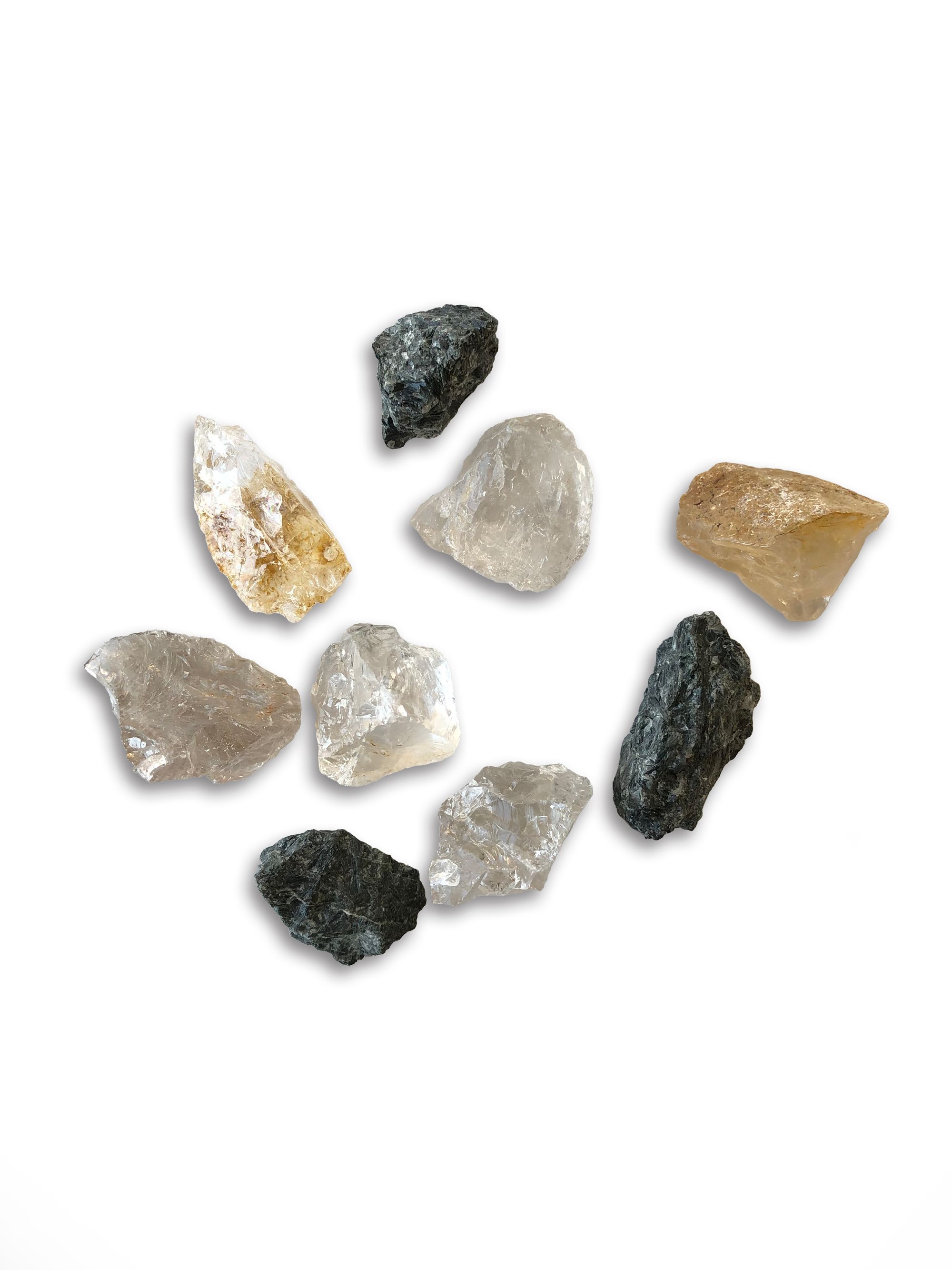
Material inspiration. Photographed by Matías Alvial for PIN–UP
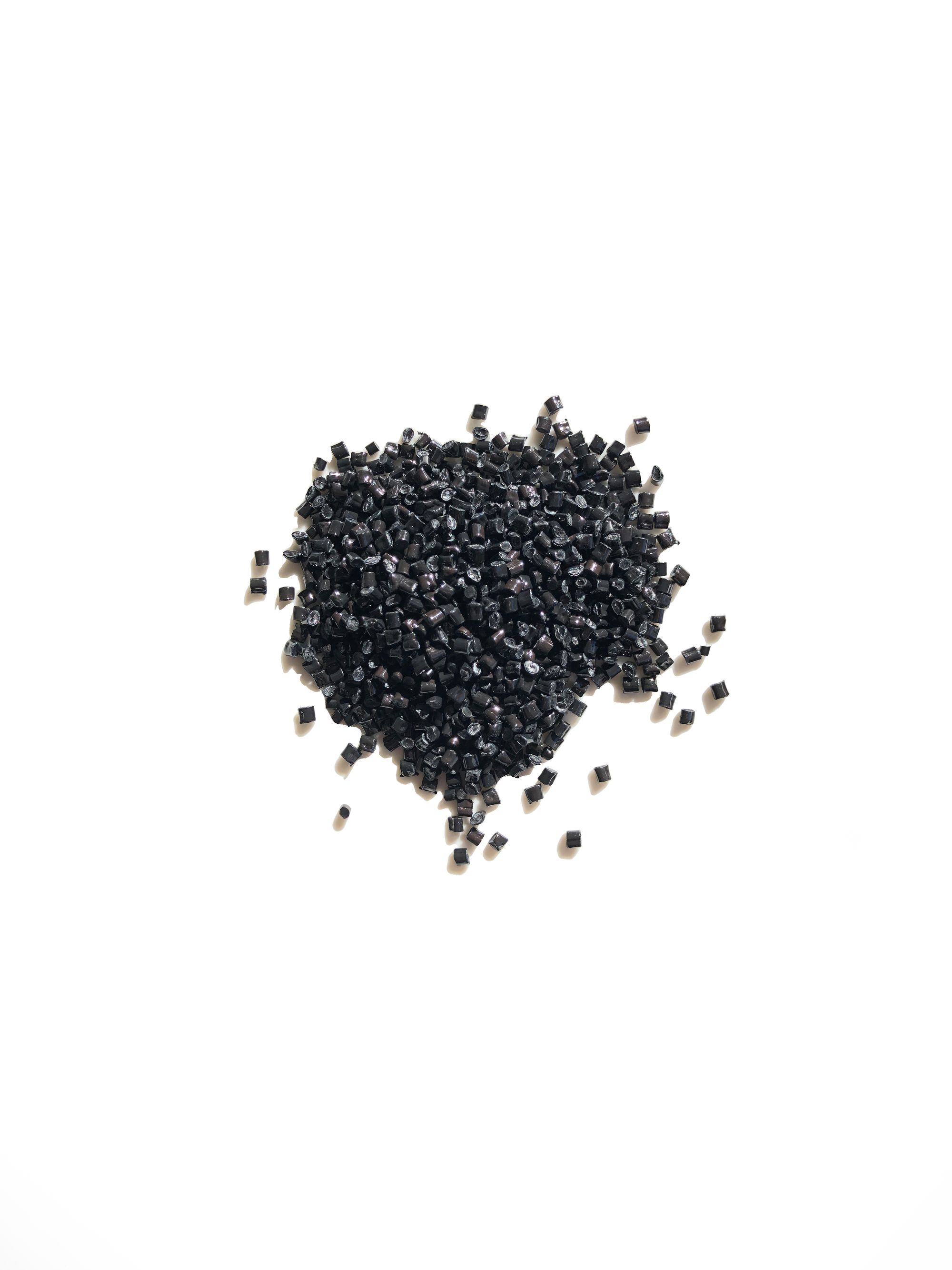
Material inspiration. Photographed by Matías Alvial for PIN–UP

Material inspiration. Photographed by Matías Alvial for PIN–UP
What does it mean?
If you’re an apple tree, for example, you are making apples. The apples are eaten by humans, they're eaten by animals. Whatever apples don’t get eaten fall to the ground, then they become compost for the tree, which then helps the tree grow. A virtuous cycle, as they call it. It was a framework that just seemed so incredibly powerful and smart. It was like a lightbulb went off for me. That whole idea of using nature as a model for product development I think is just such a powerful idea. If we can be as intelligent as nature, all the products we make would, of course, either go back into a biological cycle and compost, be a design for compost, or go into a technical cycle where you're using those products for new feedstocks.
How did you implement this newfound knowledge in your work?
The first project we tried to apply this philosophy was a biological nutrient, which we developed with Bill, Michael Braungart and Albin Kaelin at the the Rohner Mill in Switzerland in 1995. It was designed for composting, and really did follow the model of waste equaling food — which was mind-bending at the time.
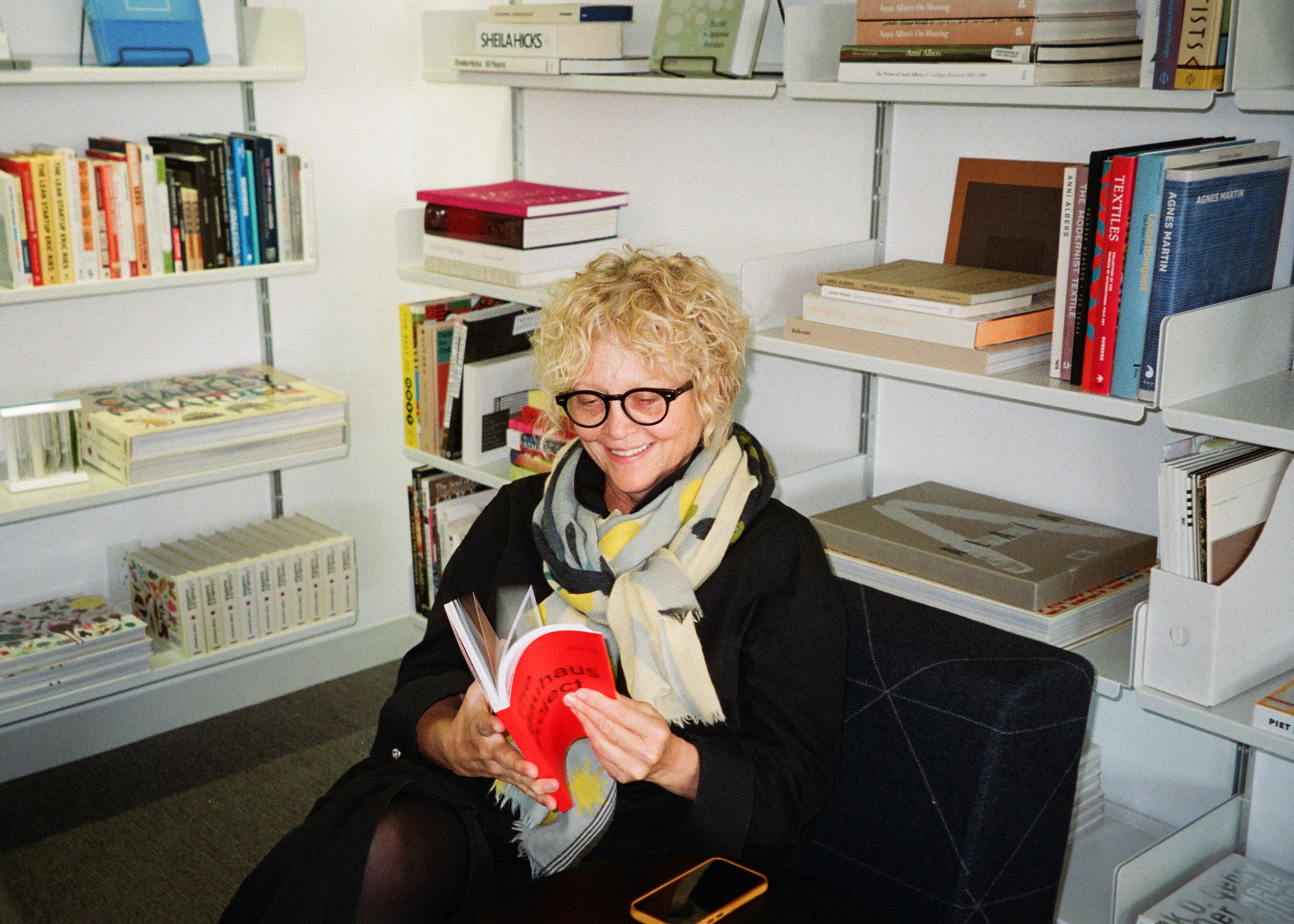
Susan Lyons in the Designtex library. Photographed by Matías Alvial for PIN–UP
You are interested in both the production and the design and the aesthetic of these materials at the same time you’re very invested in designing the systems that make them themselves. You seem to be a very right and left brained person.
I studied printmaking for a while, and I remember at a certain point realizing that the life of an artist was not going to be the life for me, because I started getting much more interested in the paper that I was using than what I could put on the paper! I’ve always loved understanding how something is made and what are all of the different inputs and how they change in their importance as the process goes along. You are constantly reevaluating your decisions based on how something has turned out, and then you’re adapting what you’ve learned to the next thing that you’re thinking about. What I also really like about design is its collaborative nature. This work is the work of a lot of people who bring a lot of different skills, points of view, and intelligence to the process. It’s an ecosystem.
How do you balance your passion for design with your desire to make less?
It’s a tension for sure, even within myself. For example, we recently had a meeting with one of our mills that’s based in Belgium. They built a fantastic new mill where they have developed these beautiful new yarns. My immediate reaction was “I just want to make something!” I have that impulse, and our industry also likes newness and novelty, so you have that tension between not wanting to buy into that, but also having an economic reality that you’re operating within. Occasionally, we get carried away with our enthusiasm and we make something that can be a little bit of a folly. And we have to do those things, too. Ultimately, we just try to make things that are of a high enough quality that they will last a very long time.

Photography by Matías Alvial for PIN–UP
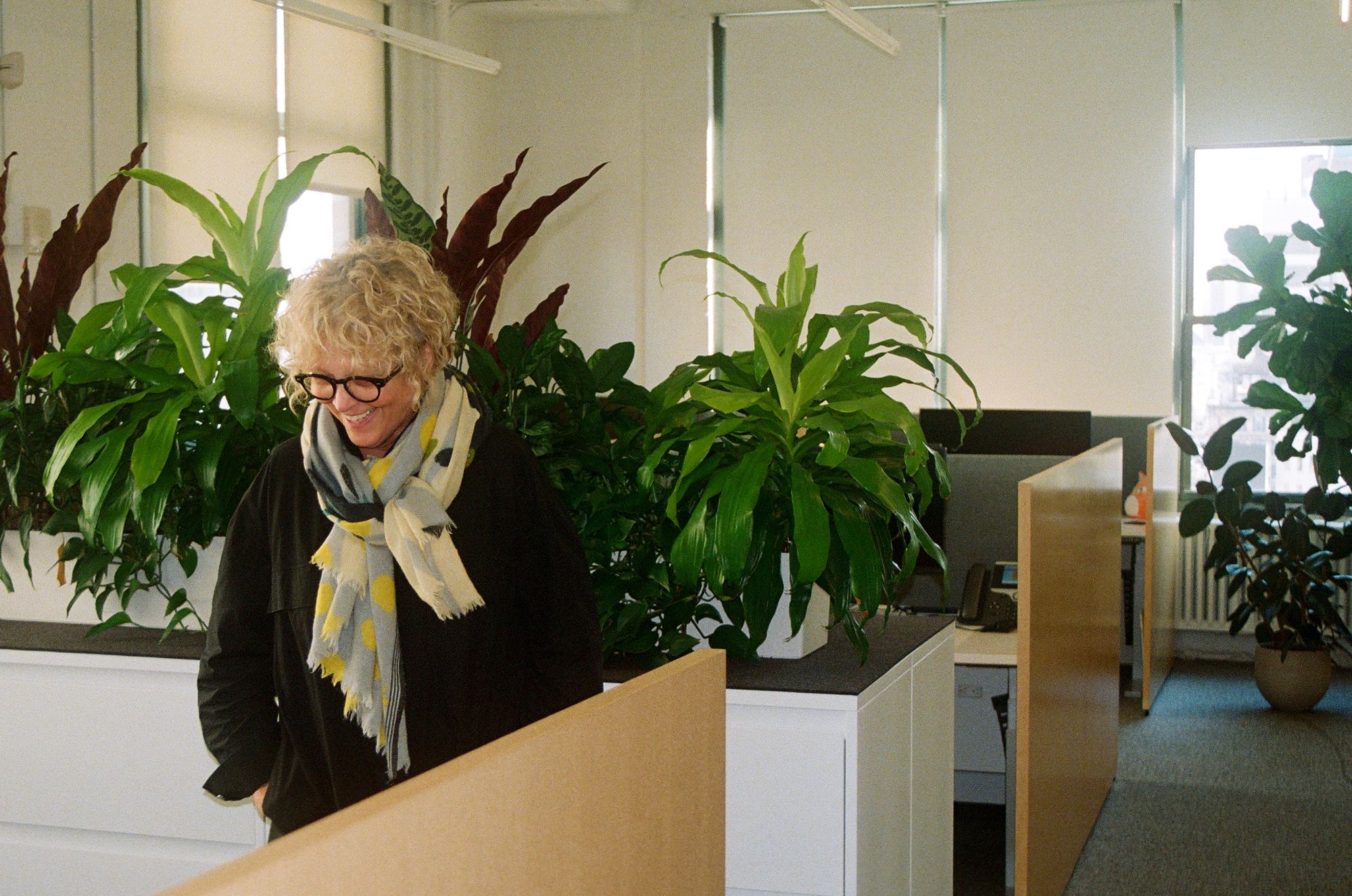
Photography by Matías Alvial for PIN–UP
Designtex just moved into a new office space in Tribeca. Can you talk to me how you approached the renovation, which you collaborated on with Standard Issue?
Yes! I’ve worked with Michael McGinn of Standard Issue for 30 years, maybe even longer. He did a lot of work with us when I was at Designtex the first time 1990-2002, and then again when I was consulting for Herman Miller, and of course to this day. They’re just super creative and I love the way they go about their work with such rigor and attention to detail. As for the new space, we were lucky. We had been in our old space for 30 years and it was time to move. We found this one, which happens to be in a LEED-certified building as well; there are even bees on the roof. The last thing we wanted to do was gut renovate and create landfill, so we kept and used as much of the original space as we could. But we knew we wanted a big open space, where everyone has their own dedicated heads-down space, modeled after library carrels where you would go in and do your thesis. We also use a lot of biophilic principles in our work so wanted to make sure we also had a lot of greenery in the new space, and so we hired a botanist to come in to recommend plants. I live within walking distance so during the pandemic, when the office was empty, I became the official plant caretaker. I don’t really have a green thumb, but thankfully all the plants survived.
I’m still stuck on the fact that you have bees on the roof.
I know. Last year they were so busy, the building gave everyone in the office honey that had been harvested from them.

Photography by Matías Alvial for PIN–UP
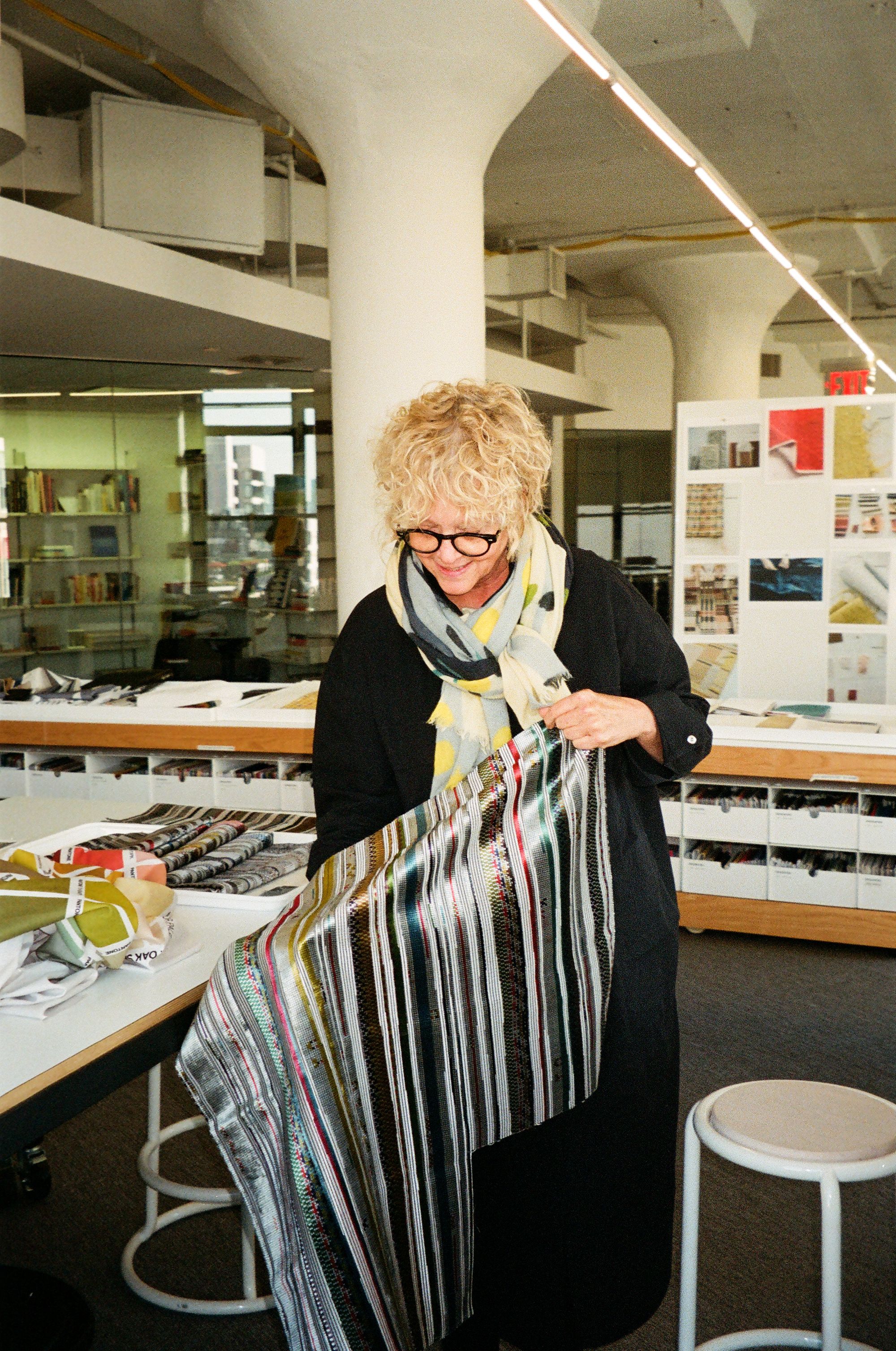
Photography by Matías Alvial for PIN–UP
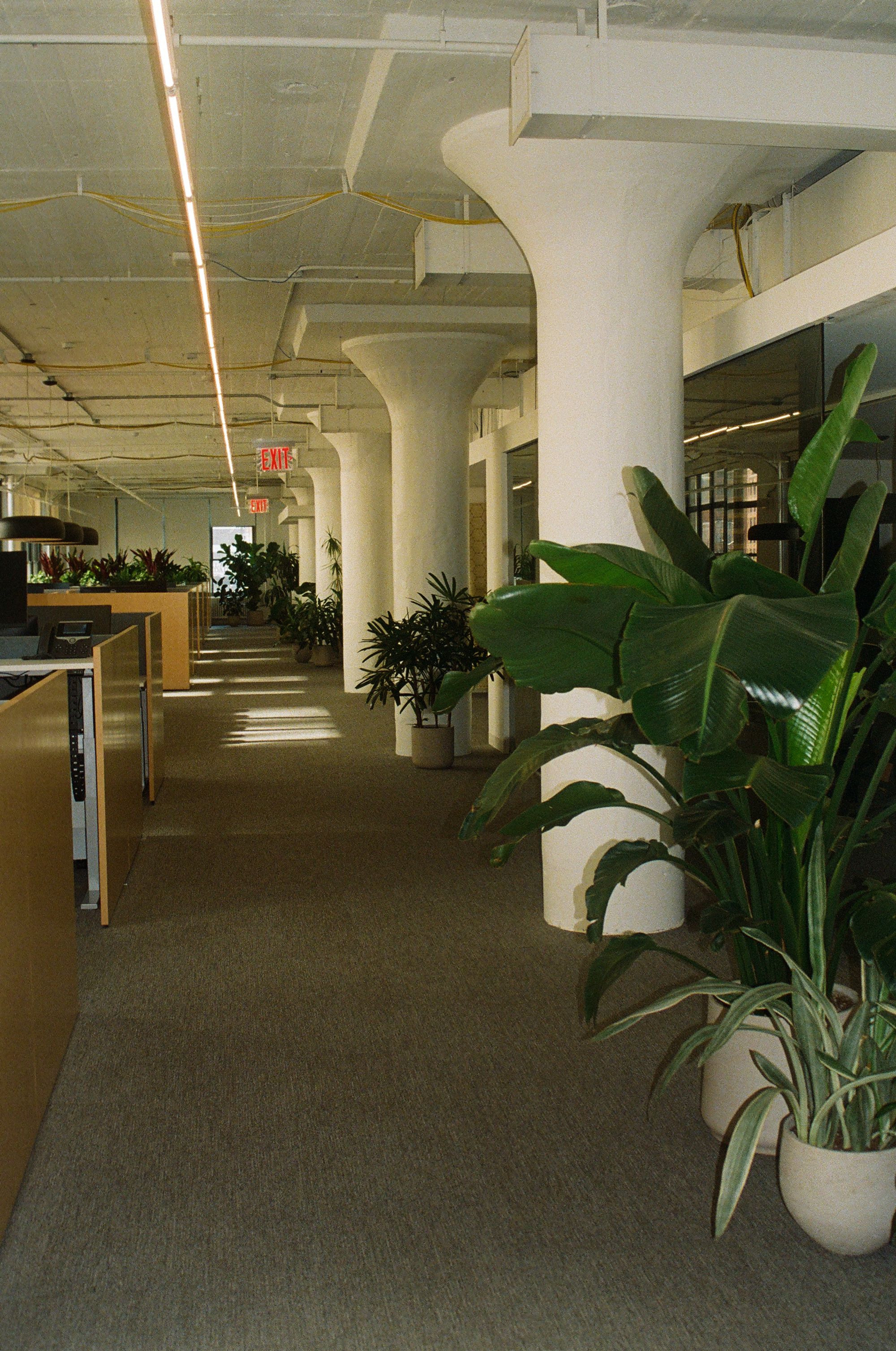
Photography by Matías Alvial for PIN–UP
I’m curious about the process of developing new materials. Is it project-based, or is there continuous independent research that’s always being done in the background as well?
I would say it’s a combination of the two. We do like to look for problems. Right now, acoustics is a big issue that we’re looking into — no one can hear themselves think, as they say. Another area of continuous research is the healthcare and wellness sector. For example, our Celliant product comes from 12 thermo-reactive minerals that are ground up into a powder, which we then extrude into a fiber, which we then make a backing for absorbs the infrared energy off your body, and then turns it back to you as oxygen in your bloodstream. If you’re sitting in a chair the material directly revives your body. A project like that takes four years before you can commercialize it, but it’s worth it when in the end you create materials that provide this added benefit. The FDA even deemed it a wellness product. It’s an amazing thing.
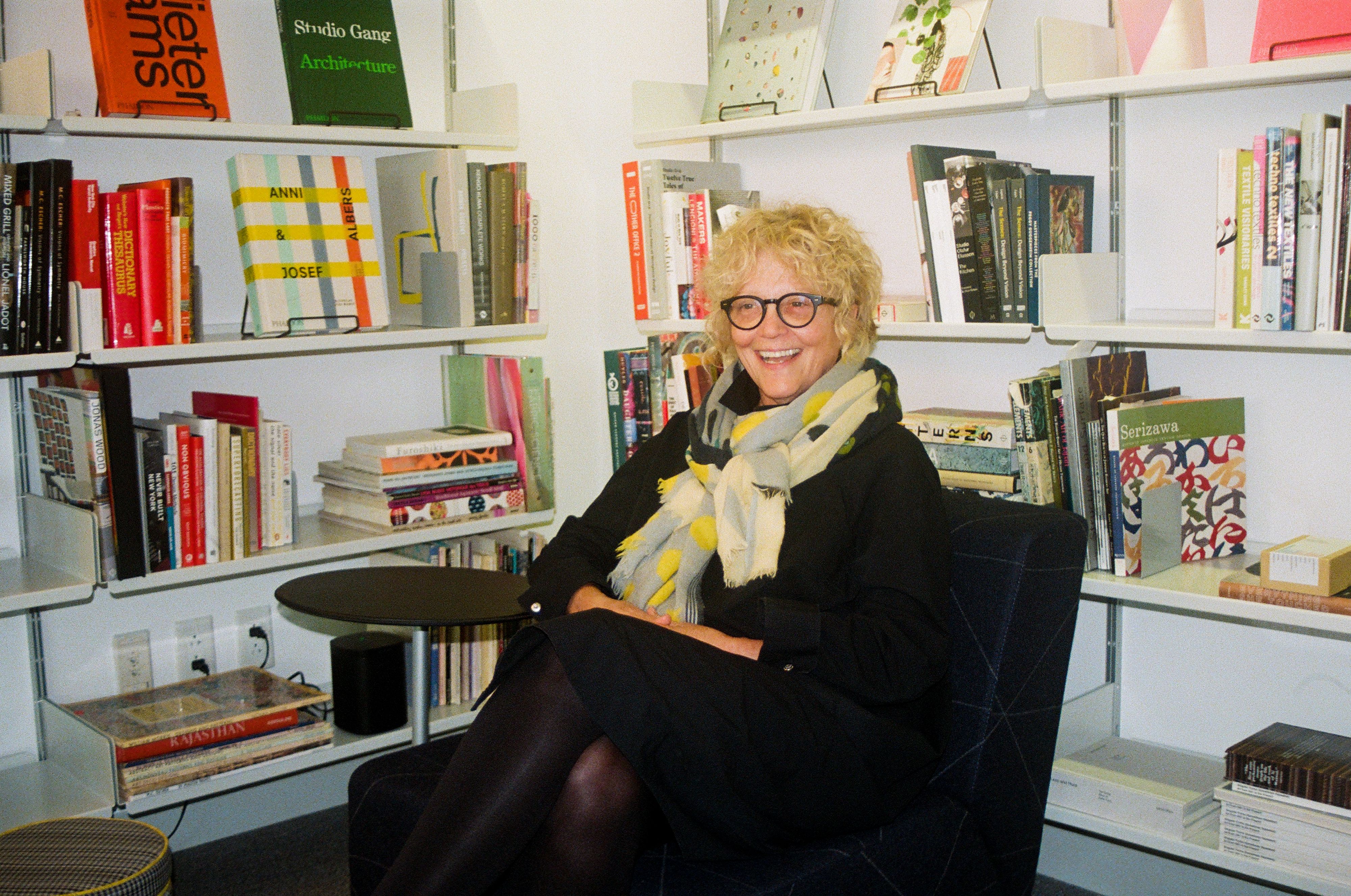
Susan Lyons photographed by Matías Alvial for PIN–UP
Any other projects you have in the works ahead?
A lot of our focus has been on developing products in healthcare applications. For example, our new portfolio of silicone textiles that we are coming out with soon. They are digitally printed silicone, and can be used inside and outside. They are disinfect-able and the fidelity of the print is really nice. We’re also working on a couple of projects with outside partners, like the Spanish rug designer Nani Marquina and another collection with London designers Wallace & Sewell.
What do you hope to see change within the industry in the years ahead?
There’s a lot of legislation right now about chemicals of concern, particularly PFAS. We’ve introduced the first PFAS-free collection of Crypton textiles. We are taking our entire portfolio and transitioning it to PFAS-free. We feel really good now that we can still provide the performance without the chemistry — which is classic cradle-to-cradle continuous optimization program. This may not be the sexiest answer but it’s a project that requires a lot of heavy lifting and that’s what we get excited about.
Do you feel that others in the industry are joining Designtex in these approaches?
I like to think that eventually they’ll have to.